Valve float is an adverse condition which can occur at high engine speeds when the poppet valves in an internal combustion engine valvetrain do not properly follow the closure phase of the cam lobe profile. This reduces engine efficiency and performance and potentially increases engine emissions. There is also a significant risk of severe engine damage due to valve spring damage and/or pistons contacting the valves
basically as the engine rpms increase the speed of the lifter reciprocating in its bore increases, at some point the valve spring load rate will not be able to force the lifter base to stay in firm contact with the cams lobe ramps, when this occure the pistons can contact the valves, rapid cascading damage is the frequent result.
at 1000rpm the lifter moves about 8 times a second, at 7000rpm thats 58 times a second
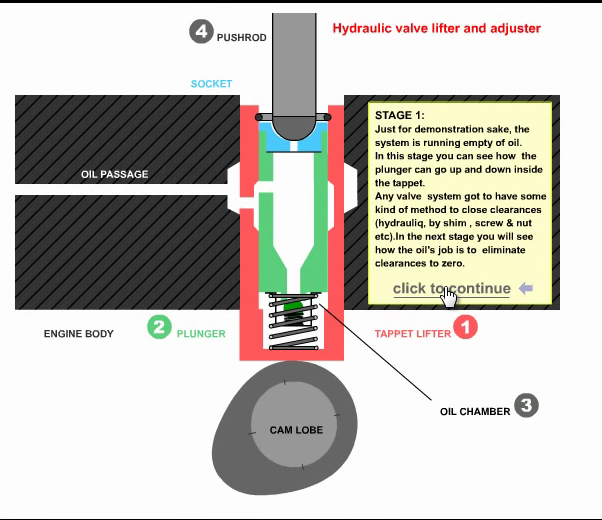

watch this video, it depicts the lifters movement as the cam lobe rotates under its base forcing it up as the lobes ramp, rotates under the lifter base,removing the clearance slack,
as it compresses the valve spring and forces the trapped oil, up the push rod and lifts the valve
If you are concerned with measuring the clearance in the hydraulic lifter seat when selecting and measuring the correct valve train geometry,
so you can order the correct length push rods...
I don,t think you have the correct idea as to how hydraulic lifters work,
yes it is possible for an engine with hydraulic lifters to be pushed too operate at a high enough rpm that the time required for the lifter seat to fully depress and all the oil too be forced up to the push rod/rockers , to be so short that the lifter pumps up and the valves will have less seat time, ( sometimes one of several factors, like the lifter leaving the cam lobes surface as the inertial loads exceed the valve springs ability to maintain lifter too lobe contact, referred too or contributing to what is commonly referred too as valve float) but that has ZERO to do with selecting push rod length or proper valve train geometry, (remember at 6000 rpm the valve is lifted off its seat 50 times PER SECOND)
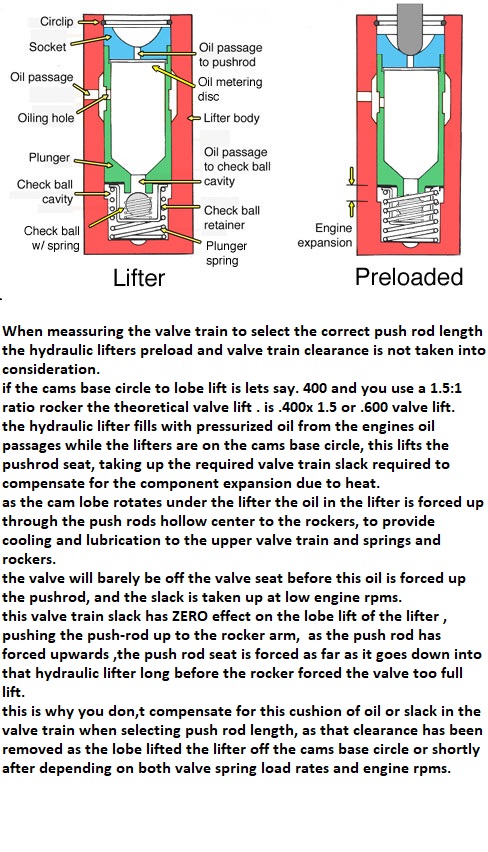
(facts)
(1)many older tachometers, (especially in the 1970-1980s) were wildly inaccurate at rpm levels exceeding 6000 rpm., youll occasionally hear guys brag about a 302-or 283 that they used to race and shift at 10,000 rpm.
(2) stress goes up dramatically as rpms increase
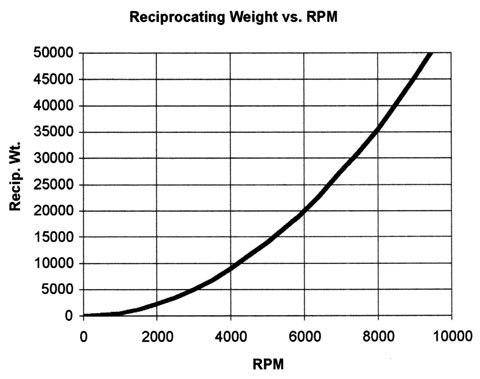
(3) unstabile valve trains can and frequently do, break valve springs
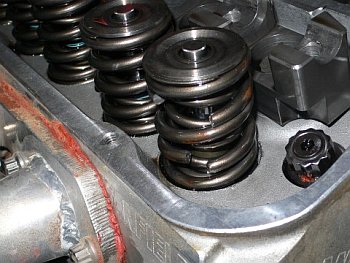
(4) floating valves and loss of valve train control frequently results in rather expensive repairs
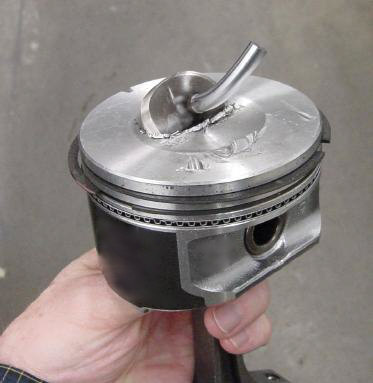

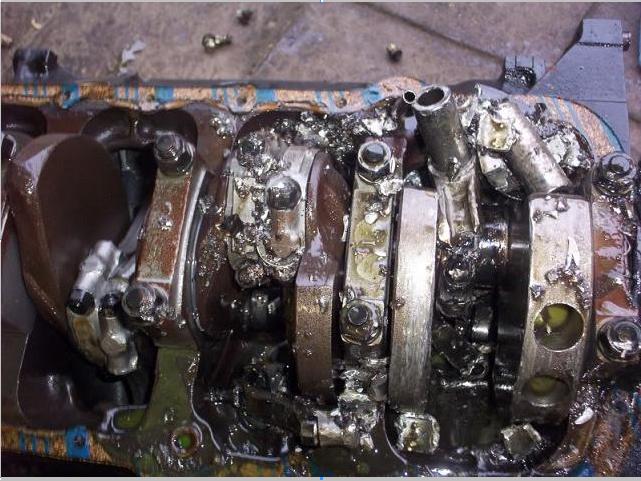
http://garage.grumpysperformance.co...onnecting-rod-rod-length-too-stroke-info.510/
http://garage.grumpysperformance.com/index.php?threads/busted-valve-spring.7716/#post-29797
basically as the engine rpms increase the speed of the lifter reciprocating in its bore increases, at some point the valve spring load rate will not be able to force the lifter base to stay in firm contact with the cams lobe ramps, when this occure the pistons can contact the valves, rapid cascading damage is the frequent result.
at 1000rpm the lifter moves about 8 times a second, at 7000rpm thats 58 times a second


watch this video, it depicts the lifters movement as the cam lobe rotates under its base forcing it up as the lobes ramp, rotates under the lifter base,removing the clearance slack,
as it compresses the valve spring and forces the trapped oil, up the push rod and lifts the valve
so you can order the correct length push rods...
I don,t think you have the correct idea as to how hydraulic lifters work,
yes it is possible for an engine with hydraulic lifters to be pushed too operate at a high enough rpm that the time required for the lifter seat to fully depress and all the oil too be forced up to the push rod/rockers , to be so short that the lifter pumps up and the valves will have less seat time, ( sometimes one of several factors, like the lifter leaving the cam lobes surface as the inertial loads exceed the valve springs ability to maintain lifter too lobe contact, referred too or contributing to what is commonly referred too as valve float) but that has ZERO to do with selecting push rod length or proper valve train geometry, (remember at 6000 rpm the valve is lifted off its seat 50 times PER SECOND)

(1)many older tachometers, (especially in the 1970-1980s) were wildly inaccurate at rpm levels exceeding 6000 rpm., youll occasionally hear guys brag about a 302-or 283 that they used to race and shift at 10,000 rpm.
(2) stress goes up dramatically as rpms increase

(3) unstabile valve trains can and frequently do, break valve springs

(4) floating valves and loss of valve train control frequently results in rather expensive repairs



http://garage.grumpysperformance.co...onnecting-rod-rod-length-too-stroke-info.510/
http://garage.grumpysperformance.com/index.php?threads/busted-valve-spring.7716/#post-29797
summit said:I have a small block Chevy in a ’66 Chevy II that seems to run pretty good but now I’m not so sure. It’s a 383 small block with a set of no-name aluminum heads, a Lunati hydraulic flat tappet Voodoo cam (227/233 degrees at 0.050 inches with 0.489/0.504-inch lift), a Performer RPM intake, and a 650 cfm Holley carburetor. The engine runs fine – doesn’t misfire or do anything funny – but I am concerned that it seems to stop pulling once the tach gets above 5,000 rpm. The ignition is an HEI with good Moroso wires and new spark plugs. The motor has been in the car for several years but about a year ago we changed to that Lunati Voodoo cam. It just seems like it lays down in high gear. Any ideas?
J.B.
Jeff Smith: One of the challenges of the whole hot rodding hobby/sport is that there are literally millions of combinations of parts from which to choose. With hundreds of companies making thousands of parts, the permutations of just cylinder heads, camshafts, intakes, and compression ratios becomes a blur of options. So it’s not surprising that you may have difficulties.
But I have some possible solutions.
You didn’t mention whether you were feeding the engine with a mechanical or electrical fuel pump. I’ll assume that the pump is probably mechanical. First thing to do is to check the fuel filter for obstructions. The fuel filter is often an afterthought and cheap, restrictive filters can reduce output from the pump. The pump may be capable of supplying fuel for low rpm and part throttle operation but at higher rpm, there is insufficient fuel pressure and volume due to a filter restriction, so start with that inspection first. Your 650 cfm Holley is big enough that it’s not really a restriction with regard to airflow.
The best way to check for adequate fuel flow is to install a fuel pressure gauge in between the pump and the carburetor and upstream of the fuel filter. This does not have to be an expensive Auto Meter gauge permanently mounted on the cowl – although this is a good idea. Instead, you could borrow or buy an inexpensive fuel pressure/vacuum gauge and plumb it into your fuel delivery system. Use a long length of rubber hose and place the gauge on the cowl where you can read it while driving. I’ve actually duct taped gauges to the lower portion of the windshield when doing diagnostic work like this. Next, run the car somewhere safe where you can make multiple passes past 5,000 rpm and monitor the gauge. Decent fuel pressure for a carburetor is 4 to 6 psi. It’s possible that at the higher engine speeds the pressure will begin to drop. If it falls below 3.5 psi, it’s possible that you’ve found the problem. Holley and several other companies make really good mechanical fuel pumps for a small-block. For example, Holley offers an 80 gallon per hour (gph) mechanical pump (PN 12-834) that will deliver more than enough fuel for our application. This pump should be able to easily supply 4.5 to perhaps 6 psi at WOT while supplying more than enough fuel volume.
If after checking fuel pressure you learn that your existing pump is working just fine, then we have another suggestion.
To be more accurate we would need more information on the valve springs and cylinder heads. But with an emphasis on the budget aspect, often these heads come with valve springs that are not up to the task of controlling the valves at high rpm. This is aggravated somewhat by the Lunati Voodoo camshaft. The Voodoo line offers great performance from a relatively short duration. Lunati accomplishes this by being fairly aggressive with the rate at which the intake and exhaust lobes open the valves. The Lunati description for this cam is “Makes unequaled power to 6,200 rpm with proper valve springs.” The key here is the connection to the valve springs.
Our experience with the Voodoo line underscores this load on the valve springs. You didn’t mention if you were running stock 1.5:1 ratio rockers. If so, that’s fine, but with 1.6:1 rockers, the additional ratio puts even greater forces on the springs because the rocker accelerates the valve even faster to achieve the greater lift. A combination of weak valve springs with a Voodoo cam and 1.6:1 roller rockers could easily cause the problem you are experiencing. Most guys would call this valve float. What they don’t tell you is how to fix this. That’s what we’re going to do.
The most accurate definition of valve float is when the spring loses control of the valve. When this happens, the first indication is when the intake valve bounces off the seat as it closes. This may not sound like a big deal, but the results will kill power. When the valve bounces off its seat, this occurs at the same time that the piston is rising in the bore and creating cylinder pressure. But when the valve bounces off the seat, it allows some of this pressure to escape. The reason the valve bounces is because the spring cannot exert enough load to keep the valve closed. When the valves bounce off the seat multiple times, the engine loses power and often can’t even achieve the rpm. This is classic valve float. Of course, the end result is a dramatic loss of power.
The most common fix for this problem is a stiffer valve spring, especially if the existing springs are on the weak side. What you should do is remove one spring and have it tested at a local machine shop. This will tell you the status of your springs. Stock replacement valve springs generally do not produce much more than about 90 to perhaps 100 pounds of seat load with an installed height of 1.750-inch. For a stock or mild performance cam, this is sufficient load. But with a performance camshaft like the Voodoo cam even Lunati’s base replacement spring is rated at only 98 pounds with at a 1.750-inch installed height and 286 pounds of force at 0.500-inch valve lift. My guess is that this spring will probably not work as well as something with a little more closed pressure, especially if the plans call for a 1.6:1 rocker. While a dual spring could do the job, this often places excessive load on the cam at peak lift. Instead, Lunati recommends using its new line of Signature Series Ovate Beehive springs. The complete valve spring and retainer kit (PN 74818K2) includes new beehive springs, retainers, and the necessary locks all under one part number.
This beehive spring offers a substantial increase in seat load from the previous spring’s 98 pounds at 1.750 to the beehive’s 130 pounds at a taller 1.800. Now that we know how valve float starts, perhaps you can see that a spring with essentially 30 percent more seat load will have a much better chance of keeping that intake valve closed at higher engine speeds. There are other added benefits to using a beehive spring but in the interest of brevity, we’ll save that discussion for another time. Changing over to the better valve springs will probably be the thing that will improve your engine’s performance and bring your small block back to life!
Last edited:
